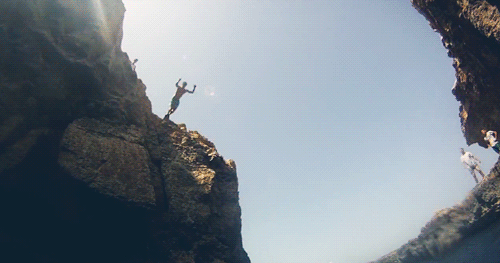| by Tariq Piracha |    |
With Nick and Kent’s recent focus on a new way forward for policy development, I began thinking about the sourcing of design thinking from Nick’s piece, and the system for more reliable problem solving from Kent's piece. If we are to assume that policy making is to take this proposed course, who is the source of the design thinking? Where do the ideas come from?
When I first joined the public service in 2001, I remember attending a Town Hall related to visible minorities and diversity in the public service. The question back then was not all that different from questions we see today: how to we attract and retain *diverse* talent for the public service?
The assumption is that there is value in a diversity of backgrounds and what those backgrounds can bring to the table. The focus for visible minority groups, of course, is to provide more opportunity for those who are otherwise shut out of the process due to the colour of their skin.
And they weren't the only groups who focused on representation based on a particular demographic. Our meetings or consultations became an exercise in ensuring that we included a visible minority, a woman, a person with a disability, a member of First Nations, someone younger, someone older – the list goes on. A successful exercise in inclusiveness was a room filled with demographic diversity.
However, if the nature of policy development is going to change (as Nick and Kent suggest), then it follows that a redefinition of diversity may be required.
As Blueprint 2020 uses digital tools to bring public servants together across the country to envision a new future for the public service, the focus is on ideas. In short, government may need to shift from visible to invisible inclusiveness.
A good idea is a good idea is a good idea
When I say “invisible inclusiveness”, I'm talking about a focus on the source of design thinking: tapping into a diversity of experience, opinion, and ideas.
It’s the notion that cognitive authority needs to supplant institutional or positional authority. We should be drawn to good ideas and we lose out if we retain biases of any kind that favour source (one's position or influence) over merit (of an idea).
It means a good idea is a good idea, no matter where it comes from and is treated as such. It means that there is value seeking out other voices and ideas (even dissenting ones). It is a belief in producing better outcomes through consultation, collaboration and cooperation. It is an acknowledgement that no one person has all the answers.
The opportunity here is that one's value is determined by their contribution, not by the colour of their skin, the year they were born, or the nation to which they belong.
It’s asking for a change in culture, which is no easy task - there is still a long way to go. Collaboration and the use of collaborative tools, while increasing in use, are by no means pervasive in the public service. And the use of these tools and the culture that may be fostered through the use of these tools are no guarantee that racism, discrimination and exclusivity are going to disappear.
However, if better policy outcomes and an effective public service are the goals for the public service, then the focus on finding the best ideas will truly need to shift from obsessing over who is getting a seat at the table to stepping out of the boardroom.











